Rolls-Royce has also displayed something special this weekend at the Villa d’Este Concours in Italy. This year’s debut arrives in the form of the Rolls-Royce Wraith Eagle VIII Collection. In the words of Rolls-Royce themselves, “Created by the Bespoke Collective at the House of Rolls-Royce, a Collection of just 50 Wraith Eagle VIII motor cars will tell the epic tale of one of the most pivotal moments of the 20th century.”
The special edition model, based on the Rolls-Royce Wraith, celebrates the first non-stop transatlantic flight in June 1919. Conducted by Captain John Alcock and Lieutenant Arthur Brown, the pioneers took off from St. John’s, Newfoundland to Clifden, Ireland in a modified First World War Vickers Vimy bomber aircraft. The plane they used was powered by twin 20.3 litre, 350 bhp, Rolls-Royce Eagle VIII engines.
100 years later, Rolls-Royce has chosen to honour the feat with a limited edition production run. By all accounts, the crossing was an epic. Alcock and Brown’s radio and navigation instruments failed after takeoff, leaving the pilots flying unaided at night through a dense cloud and freezing fog. Once they emerged from the cloud, using Brown’s extraordinary skill as a navigator, they flew by the stars to the coast of Ireland.
The 50 limited edition Wraith’s will each get a Gunmetal paint job with a Selby Grey upper two-tone and brass feature line. The grille vanes are finished in black with the rims part-polished. Inside, Selby Grey and black leather sit in contrast to bronze accents.
Brass speaker covers show the estimated flight distance of 1,880 miles and ‘RR’ monograms are embroidered in brass coloured thread onto headrests. A flash of brass complements the passenger door paniers, whilst the driver door includes a brass plaque with a quote from Winston Churchill commending the remarkable achievement, “I do not know what we should most admire – their audacity, determination, skill, science, their aeroplane, their Rolls-Royce engines – or their good fortune”.
The facia’s feature a view that might have been familiar to the duo. Rolls-Royce has used smoked Eucalyptus wood which is vacuum metalized in gold before it is inlaid with silver and copper. The clock face also harks back to the adventurer’s recollections of the trip. They recalled that the instrument panel became frozen from the high altitude and the only light available came from the green glow of the control panel lighting and the burst of flame from the starboard engine. To emulate this, Rolls-Royce developed a clock with an iced background effect which glows a faint green in night time driving conditions.
The biggest draw of a modern Rolls-Royce is the starlight headliner. 1,183 starlight fibre make up this particular example which shows the celestial arrangement at the time of the flight in 1919. The flight path and constellations are embroidered in a brass thread.

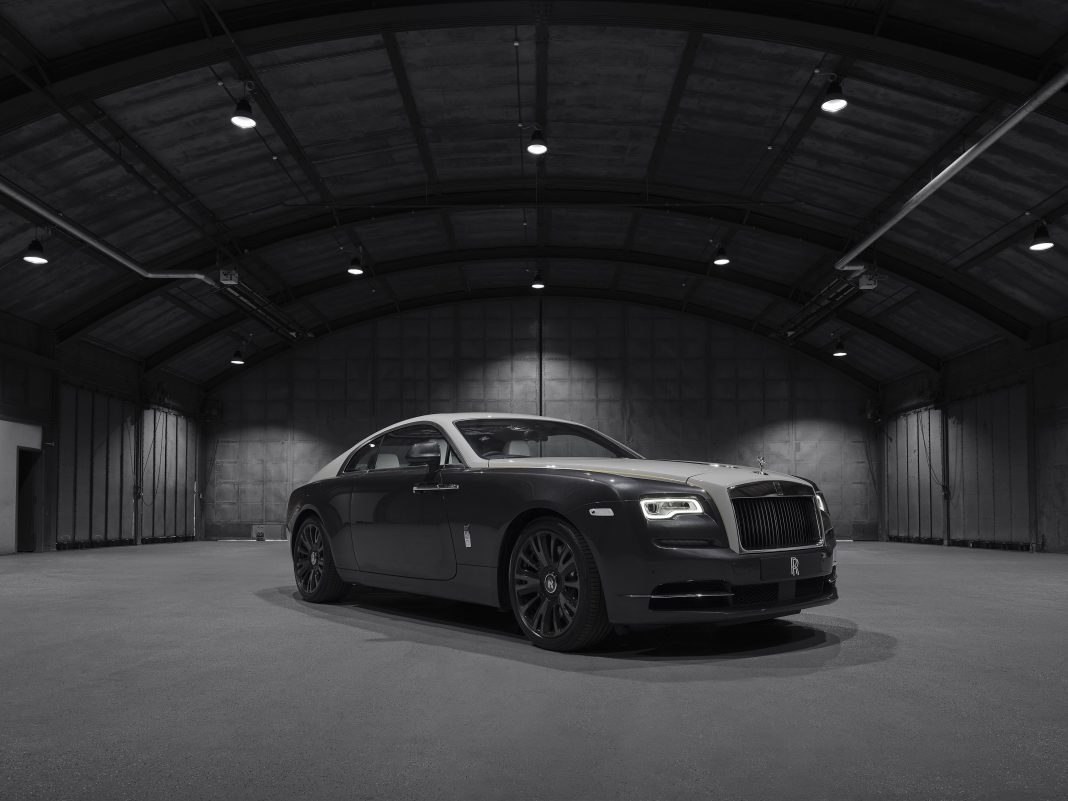


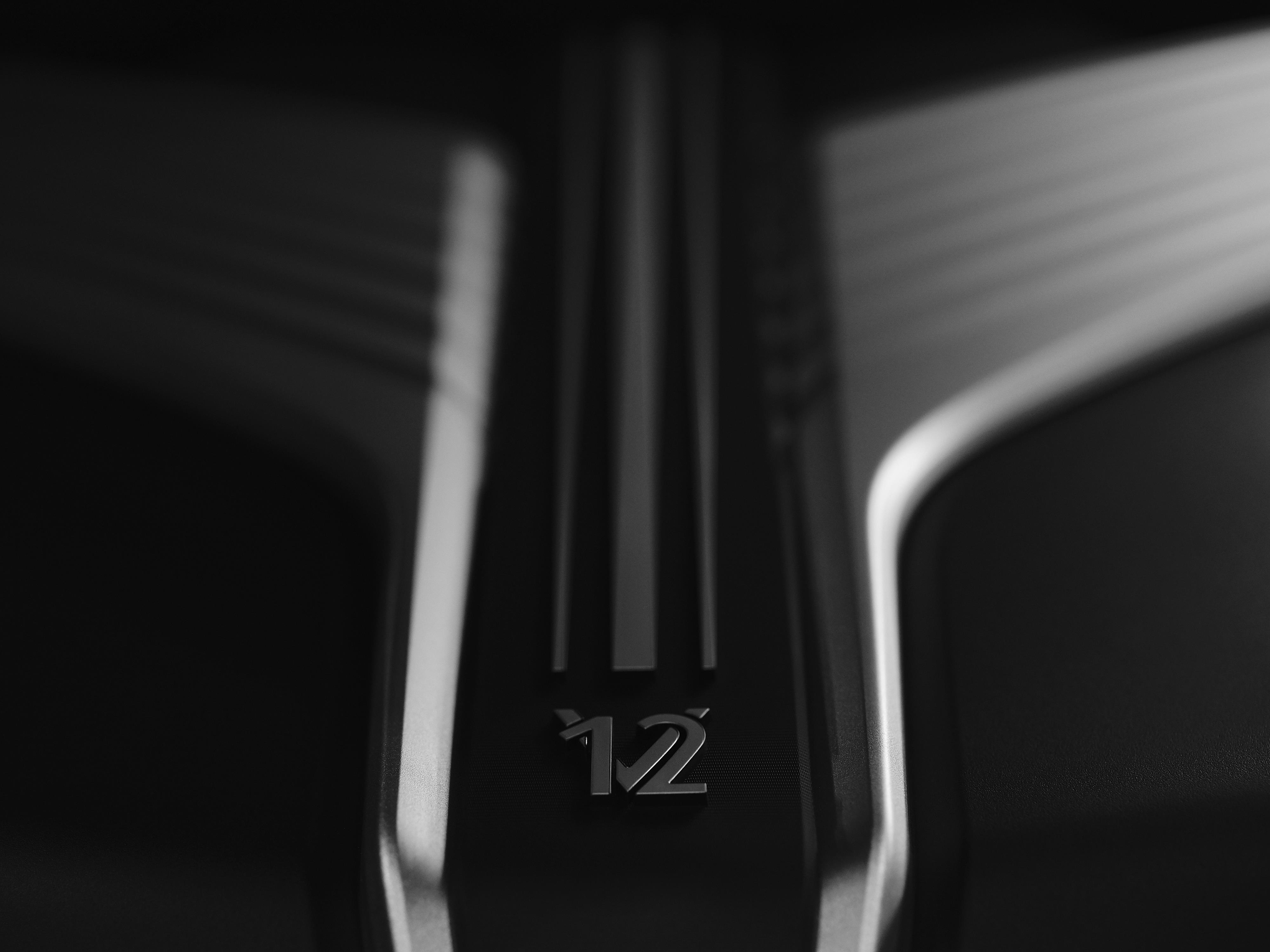
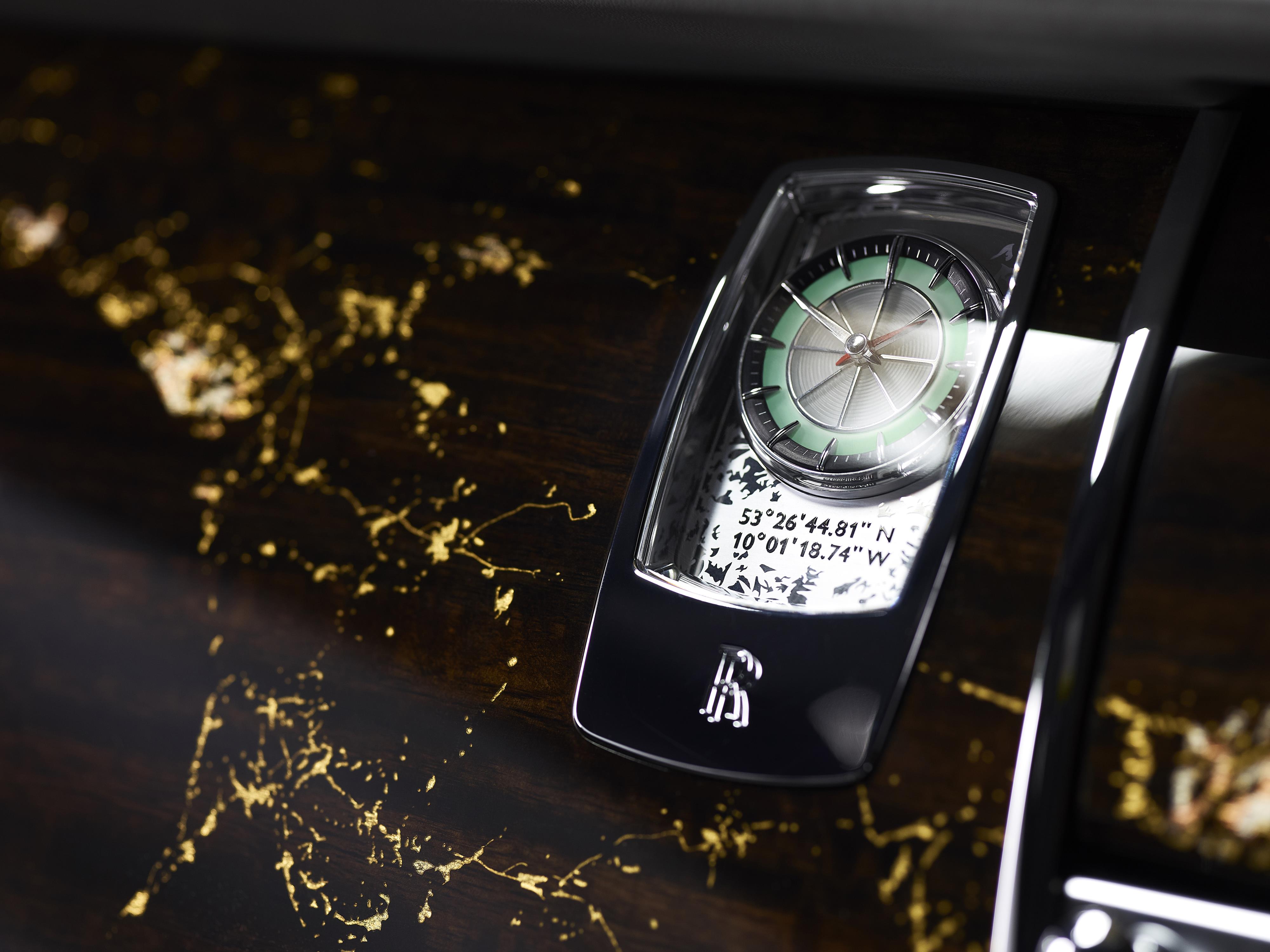

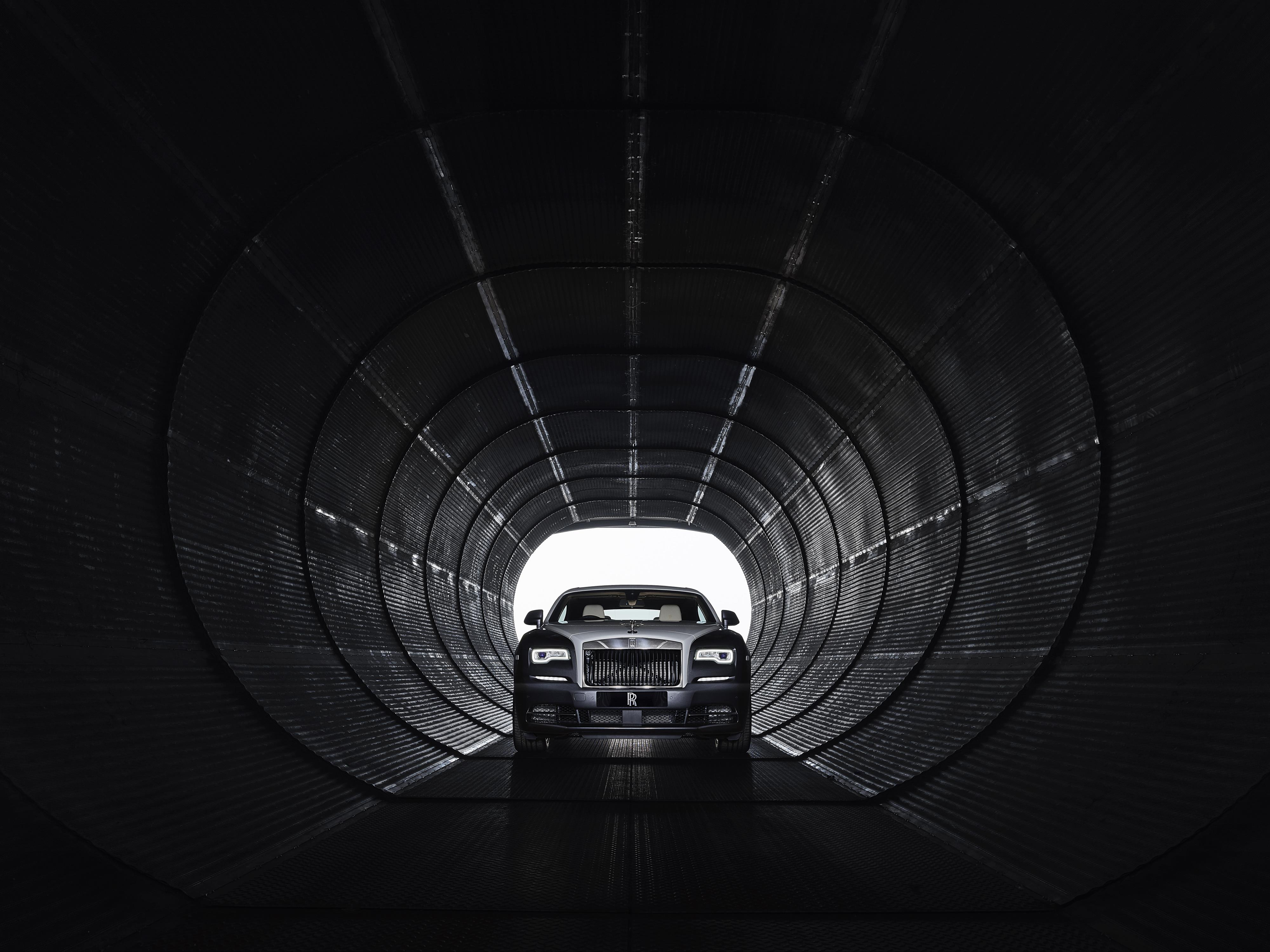
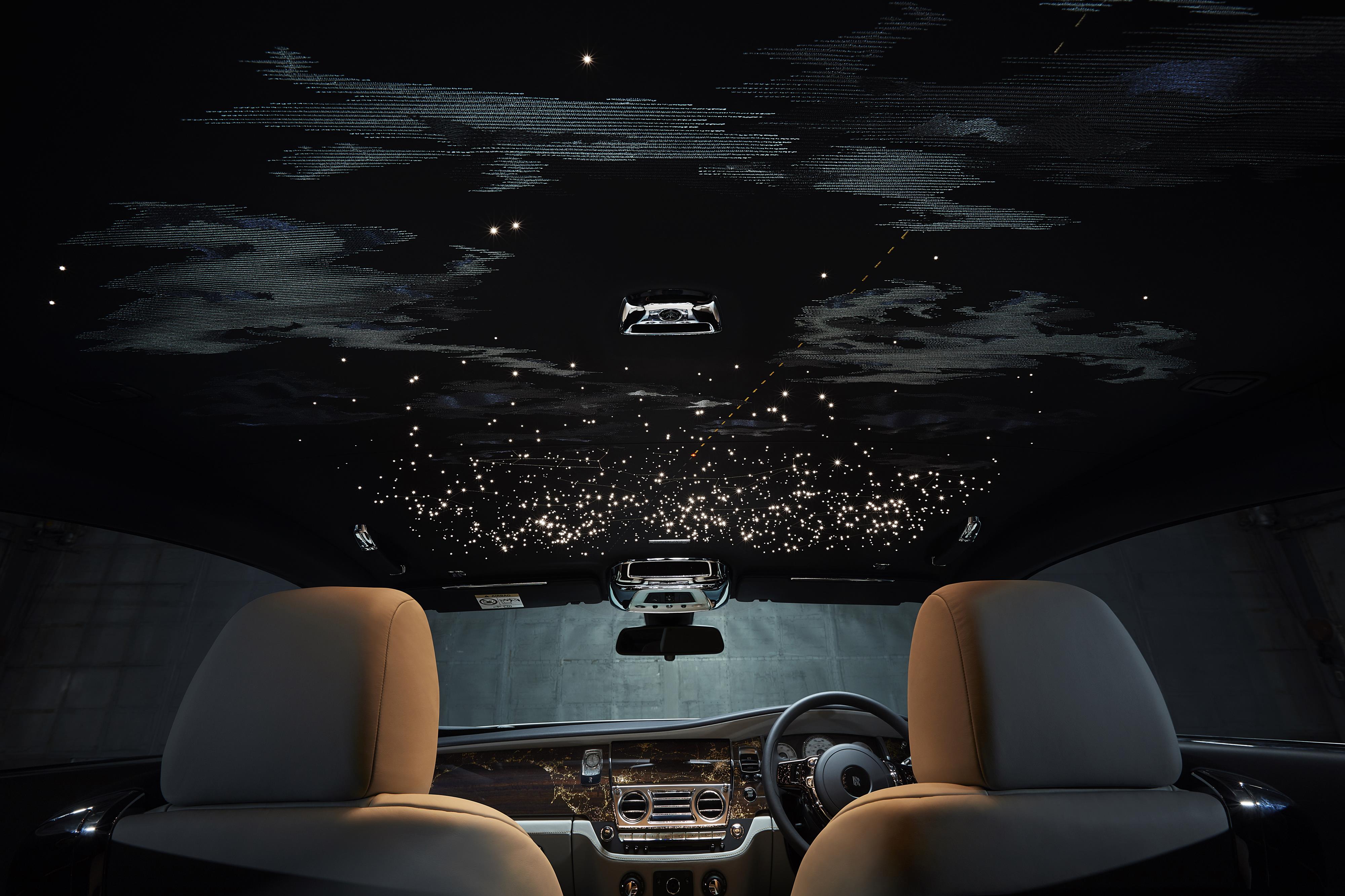
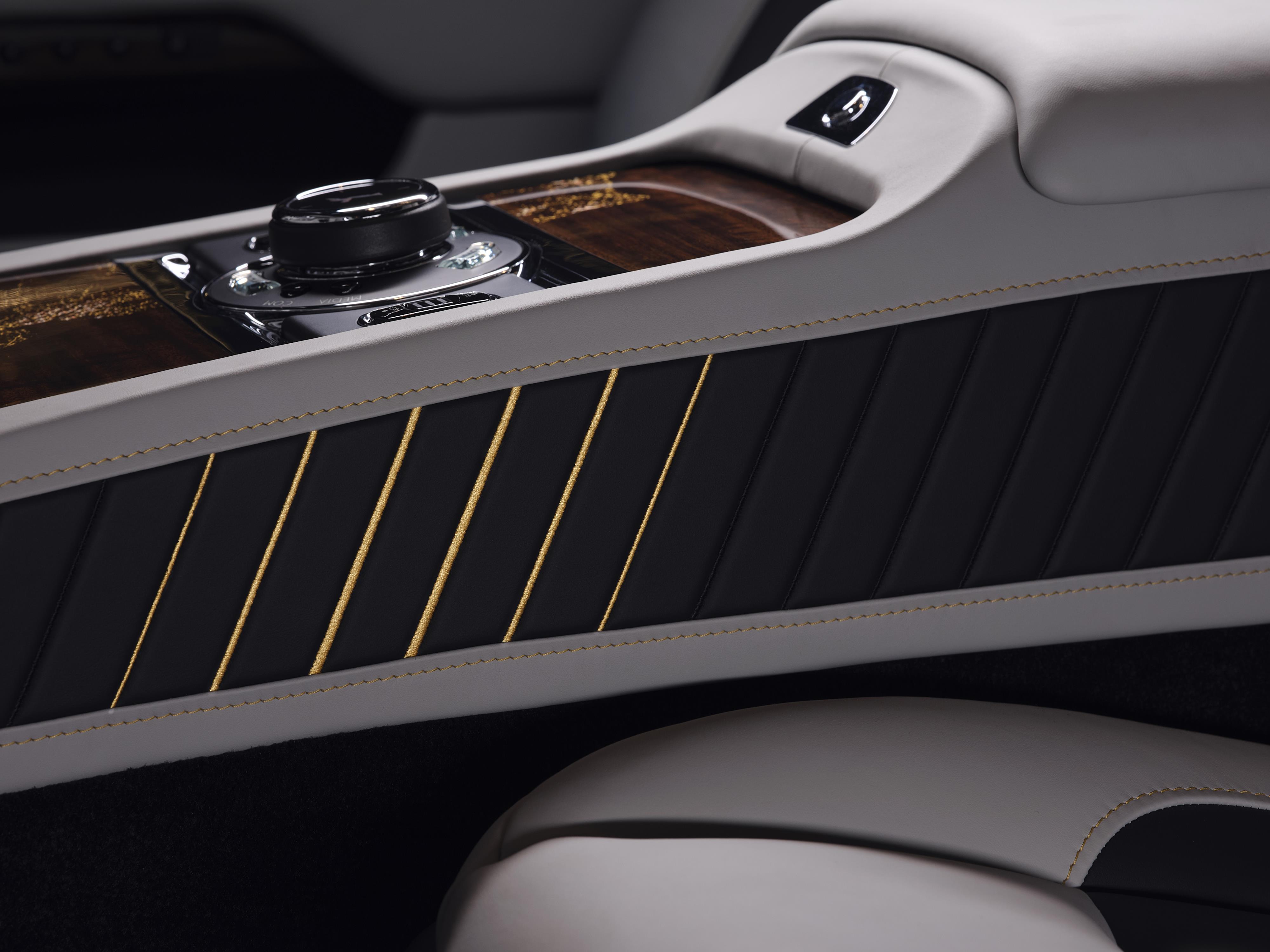


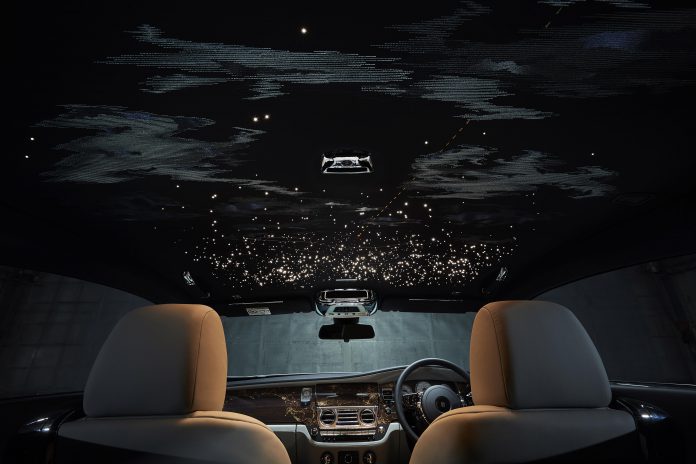














Me too. I fall in love! This car is fabulous!